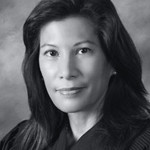One way to respond to the immigration courts crisis highlighted by those unaccompanied minors from Central America would be to overhaul the system and increase capacity. Another would be to push those cases ahead of others in hopes of discouraging other migrants from coming. Guess which one we’re doing?
The Houston Chronicle has a strong story about “… a startling turnaround for a clogged immigration court system that usually takes about six months between just these first steps [as opposed to 30 days], reflecting the government’s effort to push Central American cases through the pipeline to deter other migrants from coming. The aggressive effort, however, has ramifications for others in the system, which is facing a record backlog of more than 430,000 cases nationwide. Some immigrants’ hearings have been delayed indefinitely, which can impede time-sensitive cases and jeopardize their chances of gaining legal residency. Mexicans, who make up the largest portion of immigration courts’ caseload, saw their disposition times increase by about 13 percent to 533 days, according to a new analysis of court records by Syracuse University’s Transactional Records Access Clearinghouse.”
“The Central American cases have completely taken over the docket,” immigration attorney Salvador Colon told the paper, while another noted that “they’re shoving all the Central Americans in front saying, ‘Go home and tell everyone else not to come because you’re going to be deported. The immigration court here looks like a day care because there are so many little kids hopping around.”
